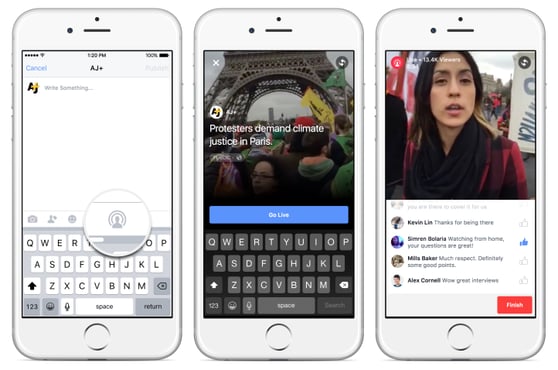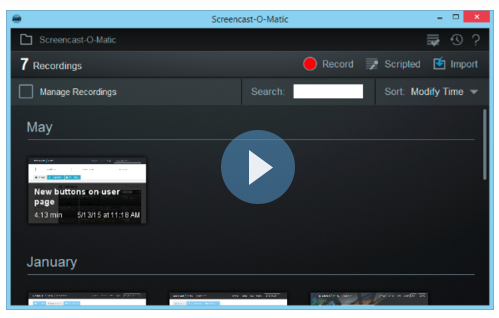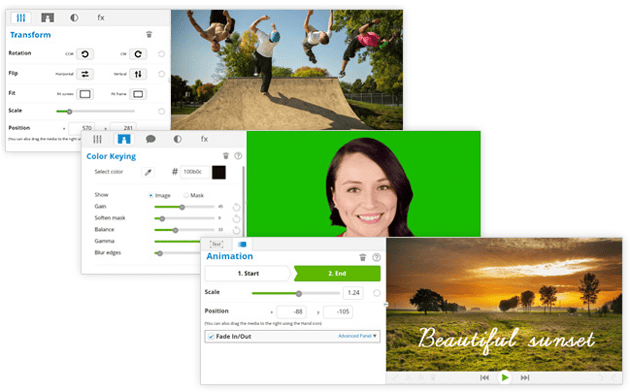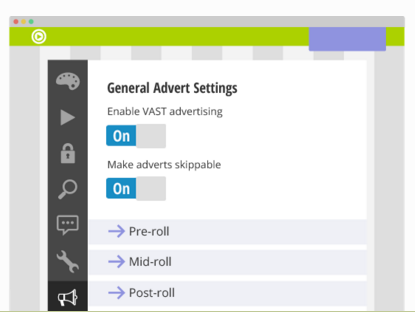The 2016 Digital Video Toolbox

The majority of marketers agree that the type of content with the best return on investment (ROI) is video, yet many brands still overlook this content type in their marketing strategies.
The reason video is sometimes overlooked is because many marketers don't know where to start. Not only is there a perception that producing videos takes a lot of resources (both time and money), but many also think it requires a certain skillset that their teams may lack.
Fortunately, the Web is here to help with a cornucopia of tools, from video capturing and editing services to distribution and marketing solutions. For those looking to implement video into their marketing strategy, start by taking a look at Website Magazine's digital video toolbox below:
Go Live
With the emergence of apps like Periscope and Meerkat, live streaming definitely grew in popularity in 2015. So popular in fact that Facebook added the functionality directly into its platform for verified Pages back in December. With the feature, marketers are able to share live video using Facebook for iOS. Users simply need to tap "Publish" and select "Live Video" to enable the functionality. Once set up, users can see the number of viewers, the names of other verified people or Pages who are tuning in as well as a real-time stream of comments. Once the broadcast is over, the video is published on the user's timeline so that fans who missed it can watch it later.
In addition to Facebook, however, there are many of other live streaming video services that brands can leverage, including the popular Hangouts On Air offering from Google, as well as Livestream, IBM's UStream and YouTube's live streaming service for verified channels.

Share Your Screen
Aside from live videos, brands can also leverage screencast software to add video to their marketing initiatives.
Tools like Screencast-O-Matic, for example, enable users to create and share screen recordings. The free version of the service offers 15-minute recordings, screen and webcam recordings, the ability to publish recordings to YouTube and/or save recordings as video files. Conversely, Screencast-O-Matic Pro offers no watermark, the ability to make longer recordings, editing tools, computer audio recording, scripted recordings, draw-and-zoom functionality, a screenshot tool and the ability to publish recordings to Google Drive, Vimeo and Dropbox. What's more, the company offers a Pro Hosting package that enables users to create their own branded site for screencasts with options to embed the recorder in their own website.
In addition to Screencast-O-Matic, marketers can also check out solutions like Screencast.com, Camtasia or iShowU. It is important to note that one of the Web's most popular screencasting services, Screenr, shut down last November due to its outdated technology (Java RE). That said, businesses that had leveraged the service in the past can still download their videos.

Create a Masterpiece
Most marketers likely think about editing when it comes to implementing a video strategy. While live streams and screencasting typically don't require much (if any) editing, traditional videos can (depending on the desired outcome).
Luckily, there are many video editing solutions available. YouTube, for instance, offers a variety of editing tools, including filters, slow motion functionality, a stabilizer and the ability to add text, sound, photos, transitions and other effects to videos.
In addition to YouTube, brands can leverage solutions like WeVideo, which offers screen recording and voiceover functionality, as well as Magisto or Animoto. What's more, solutions like iMovie and Adobe Premiere Pro can be leveraged to edit and customize videos too.

Where to Host
When a video is edited and ready to be shared, brands must have a plan on where to host this content. While the obvious choice is YouTube, it is not the only option. Others that should be considered include Vimeo and Vzaar.
Vimeo, for instance, is leveraged by more than 30 million people and enables business users to add up to 20GB per week of HD videos and showcase them in the company's customizable, embeddable HD player. In addition, Vimeo does not put ads before, after or on top of Pro users' videos. Vzaar, on the other hand, enables users to upload up to 10 videos at once, offers a customizable video player and enables users to monetize their content by adding pre, mid or post roll advertisements.

It is important to note that the listed video solutions are just the tip of the iceberg, as the Web is full of solutions that can help brands make video an integral part of their marketing strategies. What is your favorite digital video tool? Share it in the Comment Section below.

Popular Post
Subscribe to Our Newsletter!
Latest in Social Media







